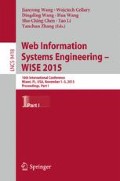Abstract
Multi-channel marketing attribution modeling is a two-stage process. First, the value of exposure from different marketing channel needs to be estimated. Next, the total surplus achieved needs to be assigned to individual marketing channels by using the exposure effects from the first stage. There has been limited work in exploring possible choices and effects of determining the value of exposure to different marketing channels in the first stage. This paper proposes novel non-parametric and semi-parametric approaches to estimate the value function and compares it with other natural choices. We build a simulation engine that captures important behavioral phenomenon known to affect a customer’s purchase decision; and compare the performance of five attribution approaches in their ability to closely approximate the known ground truth. Our proposed method works well when marketing channels have high levels of synergy. We apply the proposed approaches on two real-world datasets and present the results.
Access this chapter
Tax calculation will be finalised at checkout
Purchases are for personal use only
Notes
- 1.
We use i as a counter for elements (users) in \(\varUpsilon \) as well as elements (users) in \(\varUpsilon \) depending on the context, j is also used in a similar fashion for the set \(\varOmega \).
- 2.
A coalitional game denoted by (f,N) is defined by a characteristic function f and total number of players in the game N, where f maps subsets of players to real numbers: \( f: {P}(N) \rightarrow {R} \) with \(f(\emptyset )=0\), where \(\emptyset \) denotes the empty set and P(N) is the power set of the N players.
- 3.
One key criterion is that the characteristic function f should satisfy \(f(\emptyset )\) = 0.
- 4.
Non-overlapping cover set: Given a set of elements \(\varTheta \) = { 1,2,...,n }, \(\varDelta \) = \(\{U_1\),\(U_2\),..,\(U_k\}\) is a non-overlapping cover set of \(\varTheta \) if \(U_1 \cup U_2 \cup .. \cup U_k\) = \(\varTheta \) and \(U_i \cap U_j\) = \(\emptyset \), \(\forall \) i,j in \(\varDelta \)
References
Abhishek, V., Fader, P.S., Hosanagar, K.: Media exposure through the funnel: a model of multi-stage attribution. Technical report, Working paper. Carnegie Mellon University, Pittsburgh (2013)
Armstrong, J.S., Collopy, F.: Error measures for generalizing about forecasting methods: empirical comparisons. Int. J. Forecast. 8(1), 69–80 (1992)
Binmore, K., Rubinstein, A., Wolinsky, A.: The nash bargaining solution in economic modelling. RAND J. Econ. 17, 176–188 (1986)
Breiman, L.: Random forests. Mach. Learn. 45(1), 5–32 (2001)
Dalessandro, B., Perlich, C., Stitelman, O., Provost, F.: Causally motivated attribution for online advertising. In: Proceedings of the Sixth International Workshop on Data Mining for Online Advertising and Internet Economy, p. 7. ACM (2012)
Hastie, T., Tibshirani, R., Friedman, J., Hastie, T., Friedman, J., Tibshirani, R.: The Elements of Statistical Learning. Springer, New York (2009)
Shao, X., Li, L.: Data-driven multi-touch attribution models. In: Proceedings of the 17th ACM SIGKDD International Conference on Knowledge Discovery and Data Mining, pp. 258–264. ACM (2011)
Shapley, L.S.: A value for n-person games. Technical report, DTIC Document (1952)
Sinha, R., Saini, S., Anadhavelu, N.: Estimating the incremental effects of interactions for marketing attribution. In: 2014 International Conference on Behavior, Economic and Social Computing (BESC), pp. 1–6. IEEE (2014)
Skidmore, A.K.: A comparison of techniques for calculating gradient and aspect from a gridded digital elevation model. Int. J. Geog. Infom. Syst. 3(4), 323–334 (1989)
Xu, L., Duan, J.A., Whinston, A.: Path to purchase: a mutually exciting point process model for online advertising and conversion. Manage. Sci. 60(6), 1392–1412 (2014)
Author information
Authors and Affiliations
Corresponding author
Editor information
Editors and Affiliations
Rights and permissions
Copyright information
© 2015 Springer International Publishing Switzerland
About this paper
Cite this paper
Yadagiri, M.M., Saini, S.K., Sinha, R. (2015). A Non-parametric Approach to the Multi-channel Attribution Problem. In: Wang, J., et al. Web Information Systems Engineering – WISE 2015. WISE 2015. Lecture Notes in Computer Science(), vol 9418. Springer, Cham. https://doi.org/10.1007/978-3-319-26190-4_23
Download citation
DOI: https://doi.org/10.1007/978-3-319-26190-4_23
Published:
Publisher Name: Springer, Cham
Print ISBN: 978-3-319-26189-8
Online ISBN: 978-3-319-26190-4
eBook Packages: Computer ScienceComputer Science (R0)

